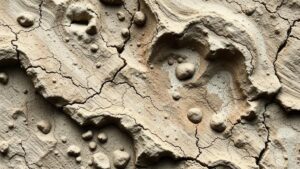LiDAR Mapping Tools for Treasure and Relic Hunters: A Beginner’s Guide
LiDAR Mapping Tools for Treasure and Relic Hunters: A Beginners Guide
Light Detection and Ranging (LiDAR) technology has revolutionized the fields of archaeology, geography, and environmental science. Recently, its application has extended into treasure hunting and relic recovery. This guide outlines the fundamentals of LiDAR mapping tools, focusing on their relevance for beginners in treasure and relic hunting.
Understanding LiDAR Technology
LiDAR is a remote sensing method that uses light in the form of a pulsed laser to measure variable distances to the Earth. data generated allows for the creation of highly accurate three-dimensional information about the surface characteristics of the Earth. A key advantage of LiDAR is its ability to penetrate vegetation, thereby revealing features obscured by foliage.
The Benefits of LiDAR for Treasure Hunting
- High Precision Mapping: LiDAR provides accurate topographic information that is crucial for identifying potential treasure locations. Historical data points indicate that features as small as 15 cm can be detected.
- Vegetation Penetration: LiDAR can reveal hidden structures beneath tree canopies and dense undergrowth, allowing hunters to locate old roads, foundations, or burial sites.
- Data Processing: The data can be processed and analyzed using GIS software to create detailed maps that highlight areas of interest.
Real-World Applications
The practical use of LiDAR in treasure hunting can be observed in various archaeological sites. For example, in 2018, researchers used LiDAR to uncover ancient structures in Guatemalas Maya Biosphere Reserve. The technology revealed a complex of more than 60,000 structures, including homes, roads, and fortifications, which were previously hidden by dense jungle.
Also, in Scotland, LiDAR has helped treasure hunters identify potential sites of historical battles, revealing patterns in the landscape that align with accounts of military engagements. Such discoveries have led to successful finds of artifacts dating back to the 15th century.
Getting Started with LiDAR
For beginners, accessing LiDAR data and tools can be daunting. But, there are several approaches to simplify the process:
- Data Acquisition: Many local and federal agencies, including NASA, the United States Geological Survey (USGS), and various state geological surveys, provide accessible LiDAR data. Websites such as OpenTopography and the National Oceanic and Atmospheric Administration (NOAA) also offer free datasets.
- Software Tools: Numerous GIS software options are available for LiDAR data processing. ArcGIS and QGIS are popular choices, with extensive documentation and community support readily available.
- Online Tutorials: There are various online resources and tutorials to learn how to input, manipulate, and interpret LiDAR data. Platforms like YouTube and specialized GIS forums can provide insights tailored for beginners.
Challenges in Using LiDAR
Despite its advantages, there are challenges associated with using LiDAR in treasure hunting. One significant concern is data interpretation; without proper training, novices may misread the data, leading to false conclusions about treasure locations. Plus, legal considerations regarding treasure hunting must also be highlighted, with many regions requiring licenses or permits to excavate or collect relics.
Conclusion
LiDAR mapping tools are powerful assets for treasure and relic hunters, offering the ability to uncover hidden historical features with precision. As technology continues to advance, accessibility to LiDAR data is likely to improve, making it an invaluable resource for both seasoned and beginner treasure hunters.
Takeaway: Beginners interested in treasure hunting should start by familiarizing themselves with LiDAR technology through free data resources, find a suitable GIS software, and engage with online learning. By leveraging LiDAR effectively, novices can improve their chances of uncovering historical treasures while contributing to the preservation of cultural heritage.


